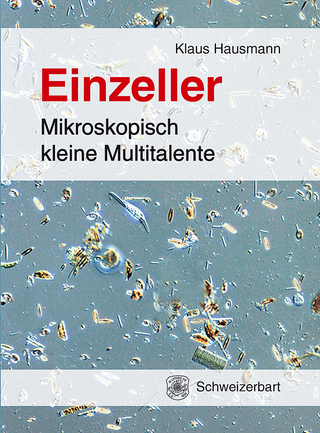
How Does Germline Regenerate?
Seiten
2024
University of Chicago Press (Verlag)
978-0-226-83049-0 (ISBN)
University of Chicago Press (Verlag)
978-0-226-83049-0 (ISBN)
A concise primer that complicates a convenient truth in biology—the divide between germ and somatic cells—with far-reaching ethical and public policy ramifications.
Scientists have long held that we have two kinds of cells—germ and soma. Make a change to germ cells—say using genome editing—and that change will appear in the cells of future generations. Somatic cells are “safe” after such tampering; modify your skin cells, and your future children’s skin cells will never know. And, while germ cells can give rise to new generations (including all of the somatic cells in a body), somatic cells can never become germ cells. How did scientists discover this relationship and distinction between somatic and germ cells—the so-called Weismann Barrier—and does it actually exist? Can somatic cells become germ cells in the way germ cells become somatic cells? That is, can germ cells regenerate from somatic cells even though conventional wisdom denies this possibility? Covering research from the late nineteenth century to the 2020s, historian and philosopher of science Kate MacCord explores how scientists came to understand and accept the dubious concept of the Weismann Barrier and what profound implications this convenient assumption has for research and policy, from genome editing to stem cell research, and much more.
Scientists have long held that we have two kinds of cells—germ and soma. Make a change to germ cells—say using genome editing—and that change will appear in the cells of future generations. Somatic cells are “safe” after such tampering; modify your skin cells, and your future children’s skin cells will never know. And, while germ cells can give rise to new generations (including all of the somatic cells in a body), somatic cells can never become germ cells. How did scientists discover this relationship and distinction between somatic and germ cells—the so-called Weismann Barrier—and does it actually exist? Can somatic cells become germ cells in the way germ cells become somatic cells? That is, can germ cells regenerate from somatic cells even though conventional wisdom denies this possibility? Covering research from the late nineteenth century to the 2020s, historian and philosopher of science Kate MacCord explores how scientists came to understand and accept the dubious concept of the Weismann Barrier and what profound implications this convenient assumption has for research and policy, from genome editing to stem cell research, and much more.
Kate MacCord is a teaching assistant professor in the School of Life Sciences at Arizona State University and the program administrator of the McDonnell Initiative at the Marine Biological Laboratory, where she also serves as the McDonnell Fellow. She is coauthor of What Is Regeneration?, also published by the University of Chicago Press.
Introduction
1 Uncovering Assumptions That Have Shaped Germ Cell Science
2 Backgrounding Conflicts within Germ Cell Science
3 Challenging Assumptions in Germline Science
4 Implications of Reenvisioning Germline Regeneration
Epilogue
Acknowledgments
Notes
Bibliography
Index
| Erscheinungsdatum | 09.01.2024 |
|---|---|
| Reihe/Serie | Convening Science: Discovery at the Marine Biological Laboratory |
| Zusatzinfo | 20 halftones |
| Sprache | englisch |
| Maße | 140 x 216 mm |
| Gewicht | 254 g |
| Themenwelt | Geisteswissenschaften ► Philosophie |
| Naturwissenschaften ► Biologie ► Zellbiologie | |
| ISBN-10 | 0-226-83049-7 / 0226830497 |
| ISBN-13 | 978-0-226-83049-0 / 9780226830490 |
| Zustand | Neuware |
| Haben Sie eine Frage zum Produkt? |
Mehr entdecken
aus dem Bereich
aus dem Bereich
mikroskopisch kleine Multitalente
Buch | Hardcover (2024)
Schweizerbart'sche, E. (Verlag)
CHF 41,85
Buch | Softcover (2024)
University of Chicago Press (Verlag)
CHF 36,65


